Interview: VR Visual Novel Altdeus: Beyond Chronos Director Haruki Kashiwakura
by Kim Morrissy, Last year, MyDearest released the intriguing Tokyo Chronos VR visual novel game, which implemented traditional visual novel gameplay mechanics in a VR setting. The game was a success in Japan, but the team at MyDearest is interested in reaching an even wider audience. The game's director Haruki Kashiwakura recently spoke to ANN about the upcoming Altdeus: Beyond Chronos, which is slated for December.
Last year, MyDearest released the intriguing Tokyo Chronos VR visual novel game, which implemented traditional visual novel gameplay mechanics in a VR setting. The game was a success in Japan, but the team at MyDearest is interested in reaching an even wider audience. The game's director Haruki Kashiwakura recently spoke to ANN about the upcoming Altdeus: Beyond Chronos, which is slated for December.
In terms of visuals, what is the biggest change from Tokyo Chronos?
The setting of Tokyo Chronos is close to modern-day Tokyo, and the main characters are high schoolers wearing their uniforms, but Altdeus has more of a sci-fi aesthetic which is set in the future Shibuya, and that's reflected in both the backdrops and the clothing sense. A big point is that it's got a number of mechanical designs. Also, the interface in Tokyo Chronos was made to be unobtrusive, but this time the interface allows you to do many more things. That's probably the biggest visual change, I think.
Even though the time period and the genre is different, the setting is still Tokyo. What makes you want to use Tokyo as a setting?
In order to connect the series, Tokyo is the key word. It was also the first concept we came up with. We wanted to depict how Tokyo's landscape and atmosphere would be affected by the promulgation of new technologies like AR and VR.
Tokyo Chronos had very limited animation. Was animation something you wanted to focus more on this time?
Fundamentally, the characters' movements are the same as in Tokyo Chronos, and are conveyed with still images. The biggest difference is that the music performance scenes involving Noa have full animation. We have animations prepared that fit the length of the music.
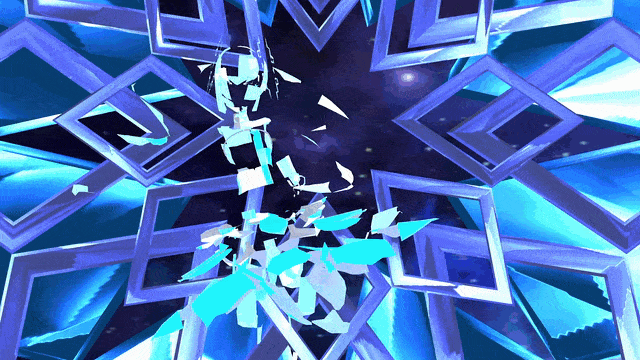
There are also animations that express the setting. Noa is a cyber being, an AR character, meaning that she's not human. She can make herself small or large when she sees fit. So beyond the animations, the scale conveys the characters as well. It was something we wanted to do because it's VR. With a television screen, you can't convey the full size of something within the frame, but with VR those limitations are lifted, so it's easier to convey size and scale. I think that's a part of animation in terms of movement as well.
Also, there are giant robots too, and we tried not to make their movements limited. When it comes to the small characters, their movements can be quite limited, but it would look strange with a large-scale object, so that's something we made consideration for.
I-V has designed both bipedal mechs and also mechs with many legs. Which kind of mecha did you want to go for this time?
In the beginning, the question of who should be the mechanical designer was something we pondered deeply. We wanted someone who could create designs that would fit the vibe of the characters designed by LAM. Among everyone we considered, I-V was the one who seemed most fitting for this particular role.
The first thing we asked for is to make the robots very big. In Altdeus, the enemies perform attacks through sound, and the robots have abilities to defend against that.
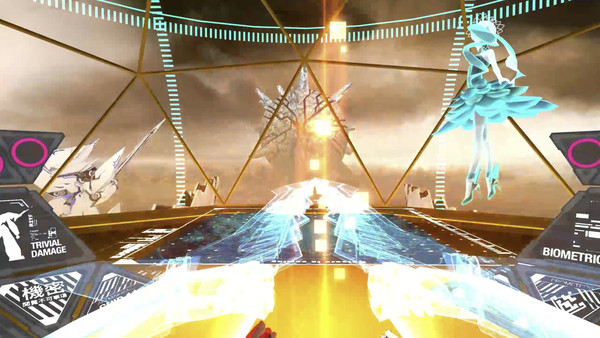
Realistically speaking, the Oculus Quest has limits when it comes to moving polygons and colors. That was something we agonized about a lot at the start. In the beginning, there were more curves and details, but we had to simplify the designs and turn more of those curves into straight lines, brushing up the art as much as necessary. We went for something that looks distinctive, even with the limitations, like the CG models in an older game.
The Oculus Quest isn't necessarily a high-end machine. It's got the specs of a high-quality phone rather than a dedicated game console, so we had to make our designs work with that.
What made you decide to use crowdfunding for both this game and also for Tokyo Chronos?
Regarding crowdfunding, I'm not the person to ask; it should be the project manager Shotaro Chida. As far as I've heard from him, it's something he wanted to do to create a movement of support for the games. It's a way of getting our collaborators more involved. The money that's raised is mainly used for PR, I think. Tokyo Chronos was the same in this regard. Donors were referred to as “production accomplices” in reference to the game's mystery themes.
Also, for Tokyo Chronos, we only had subs in English, but this time we're going to have a dub thanks to all the support in Japan.
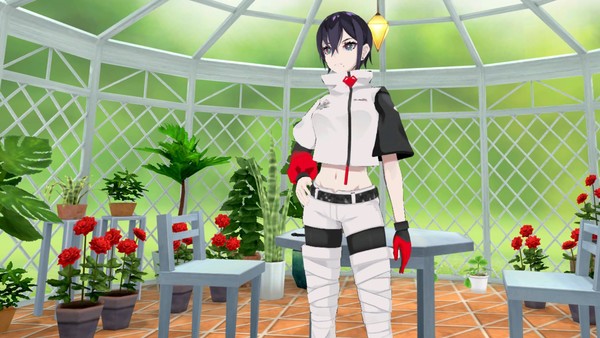
What made you decide to go for an English dub this time?
We wanted the game to reach the widest audience possible. Adding English language options was our biggest priority. Tokyo Chronos might have had English subtitles, and it had other language options such as traditional Chinese and German, but just reading the translation through text can be exhausting. Because English is the most common language in the world, we wanted to make it easier for English speakers to listen and follow what's happening by making English voices the default.
So how well did Tokyo Chronos do overseas? I've heard that it's very popular in Japan.
As far as I can tell looking at reviews, I got the impression that those who liked it really liked it, especially among people who like visual novels. That makes me happy. But I also got the impression that it didn't spread far. I'm hoping that by emphasizing more of the interactive elements and real-time commands in Altdeus, it can have more of a broader appeal beyond just the story. I think that it will get a different reaction this time.
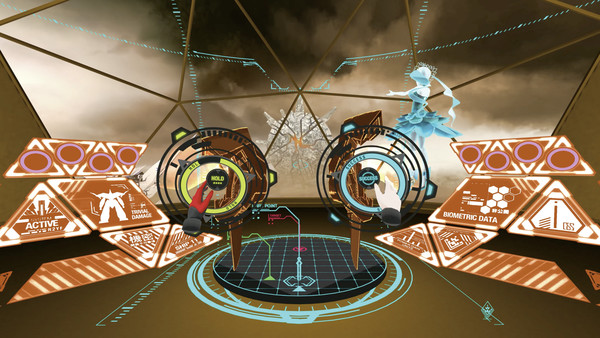
Is exploration also something you want to emphasize this time?
Right. With Tokyo Chronos, the main way to progress is through choices presented by the story, and that was presented in a very simple manner. For Altdeus, we've made it so that you can use your controller to look around the environments and touch things directly. Being able to interact with things that you touch is quite a different feature from last time, and that's something we want to emphasize.
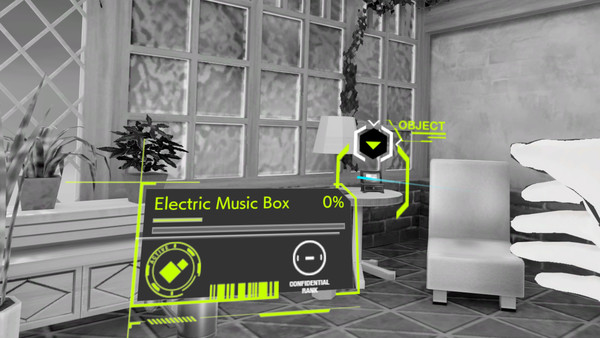
One last question: The story of Tokyo Chronos is very linear. There is only one true ending. Is there a similar format for the story this time?
I can't go into specifics, but there will be multiple endings. Unlike last time, there isn't just one ending.
For more information about the game, check the English website.